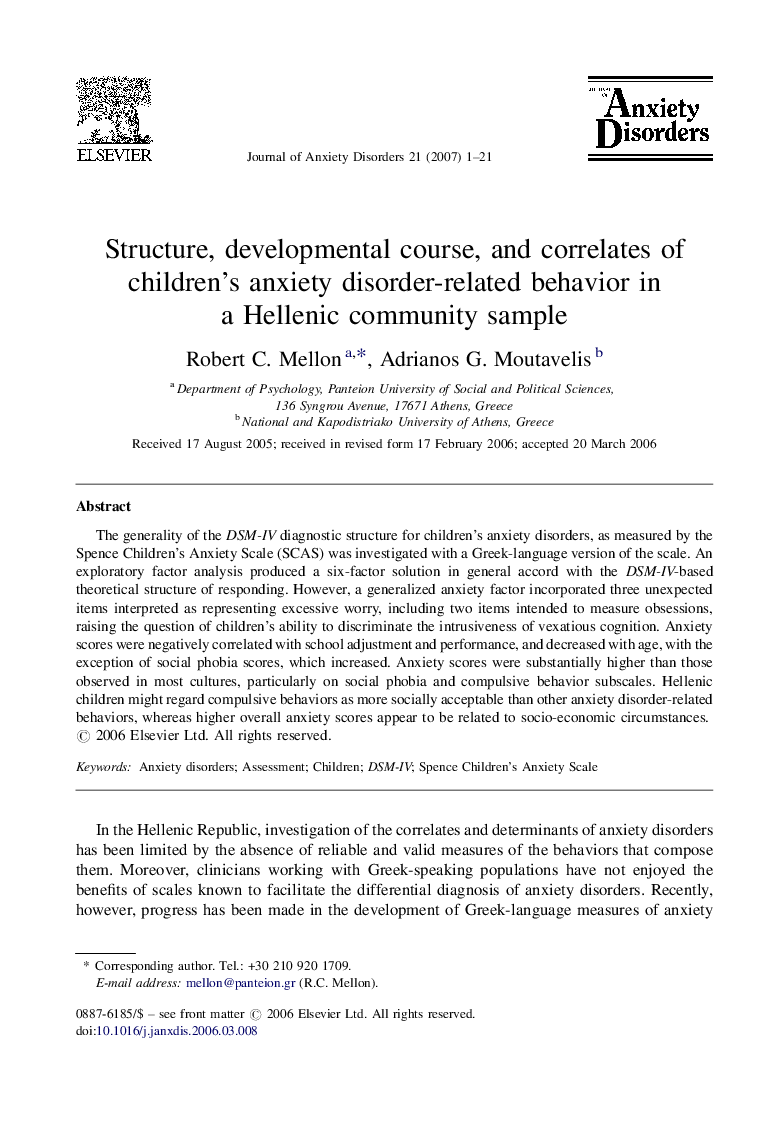| Article ID | Journal | Published Year | Pages | File Type |
|---|---|---|---|---|
| 910094 | Journal of Anxiety Disorders | 2007 | 21 Pages |
The generality of the DSM-IV diagnostic structure for children's anxiety disorders, as measured by the Spence Children's Anxiety Scale (SCAS) was investigated with a Greek-language version of the scale. An exploratory factor analysis produced a six-factor solution in general accord with the DSM-IV-based theoretical structure of responding. However, a generalized anxiety factor incorporated three unexpected items interpreted as representing excessive worry, including two items intended to measure obsessions, raising the question of children's ability to discriminate the intrusiveness of vexatious cognition. Anxiety scores were negatively correlated with school adjustment and performance, and decreased with age, with the exception of social phobia scores, which increased. Anxiety scores were substantially higher than those observed in most cultures, particularly on social phobia and compulsive behavior subscales. Hellenic children might regard compulsive behaviors as more socially acceptable than other anxiety disorder-related behaviors, whereas higher overall anxiety scores appear to be related to socio-economic circumstances.
